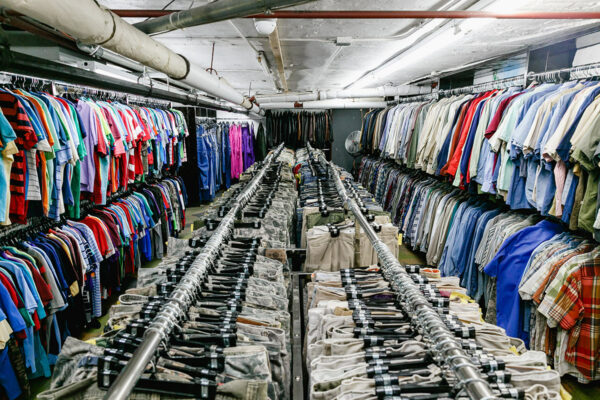WHAT IS THRIFTING?
Purchasing from thrift stores, which sell gently used clothing, accessories, and lifestyle items, is the act of thrifting. Reusing gently used objects is a decades-old concept. Historically, thrift stores were known as charity stores because, as their name implies, they were established as non-profit organizations to raise money for different causes.
The Salvation Army’s “Salvage Brigade,” which was established out of a basement where people could go in search of worn clothing and receive food and lodging in exchange, is credited with starting the thrifting trend in 1897.
Thrift stores gradually became more structured and commercial, opening up new opportunities such as vintage shopping from consignment stores that drew in affluent customers.
Thrift stores emerged as a genuine and natural means of promoting affordable, ecological fashion as awareness of the issue grew. We now have the luxury of thrifting from the comforts of our homes in the twenty-first century, and much more so from Instagram and online retailers.
Thrifting is a relatively new notion in India, and it is evident online. The epidemic made the internet marketplace more accessible to both shoppers and vendors. India’s thrifting culture is growing and seems to be here to stay. We are even more thrilled that so many influential people are stepping up to provide their own Thrift Store products, and that by working together, this Indian Thrifting Community is creating countless possibilities to serve a 1.3 billion-person audience! Ultimately, the greater the impact, the greater the reach!
WHERE DO THESE CLOTHES COME FROM?

The majority of thrift shops typically lack reliable sources for their curating process.
• Reputable thrift stores, particularly those in the West, such as Goodwill and the Salvation Army, get all of their stock from donations. Smaller thrift shops that sell donated gently used clothing come next. • Thrift stores in India choose items from nearby flea markets and secondhand shops. A few of these shops also let customers use their platform to sell their used and antique clothes.
• Large manufacturers and retailers typically make extra inventory in case there are mistakes or flaws. Then, these also become a sourcing choice.
PROCESS
We are here to answer any questions you may have because thrifting is still a relatively new idea in India. This is a quick rundown of how our office operates—on the other side of your screen!
Purchasing
We source only things that we adore since we know that others will feel the same way!
CHECK OF QUALITY
Every item is cleaned or sanitized. Our quality control staff ensures that there are no significant flaws in the product. Any small flaws are repurposed or repaired using surface decoration techniques like embroidery, and the “product description” is revised accordingly.
PHOTOGRAPHY
We eagerly anticipate picture shoots as they provide the crew with an opportunity to express their creativity and design the pieces!
Listing and Delivery
The website lists each article along with all the details you need to know about the fabric, sizes, and other details. Using recycled old magazine paper from our own Vogue subscriptions from 2017–2018, all sold items are packaged. With every order, we provide a charming note card with a handwritten greeting created on eco-friendly cotton rag paper, created and produced by 0neByZer0. After packing, the parts are sent in 100% biodegradable paper envelopes with plastic lining.
THRIFTING IN THE WEST vs THRIFTING IN INDIA

In the West, thrift stores primarily carry gently used, vintage clothing that is either donated or sold/consigned there. Studies reveal that only 20% of the clothes donated to thrift stores are sold; the other 80% is either recycled or shipped overseas to be resold in Asia or Africa. These excellently preserved garments wind up in Indian flea shops. In addition, Thrifting has its elements in India, such as the availability of secondhand goods and export surpluses, which are frequently observed.
Because the nation is based on manufacturing, export surpluses, and samples wind up at the same flea markets as used products with the same goal—selling them—and the same fate—ending up in a landfill—should they not be sold. It’s not always practicable or traceable to identify these products as “surpluses.” About 5% of excess stock is produced by export houses and manufacturing facilities to make up for any errors or flaws that may arise during order production. producing an excess and samples as a result. However, perhaps this is how we’re incorporating the Indian aspect into the Thrifting experience!
Recommend0 recommendationsPublished in Uncategorized




